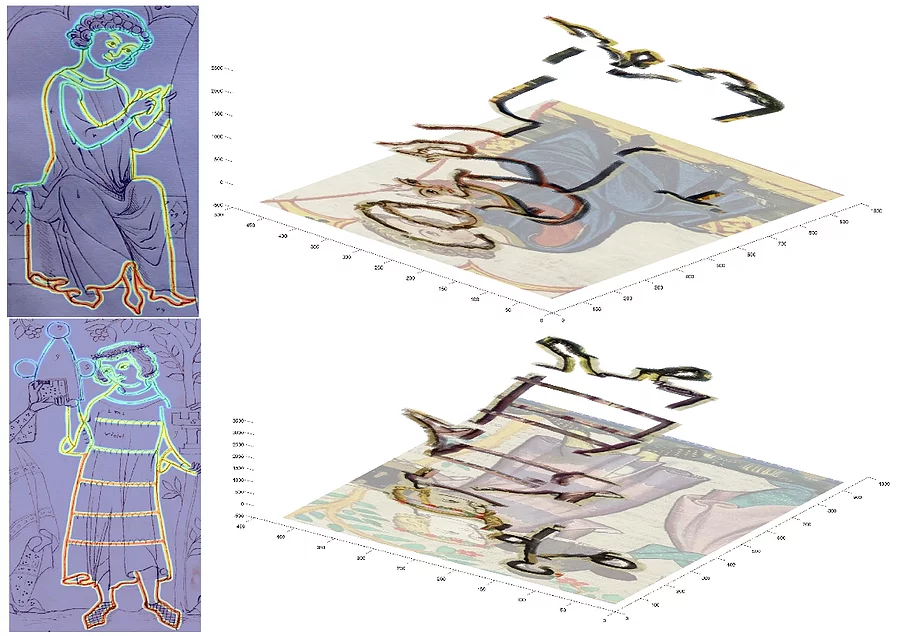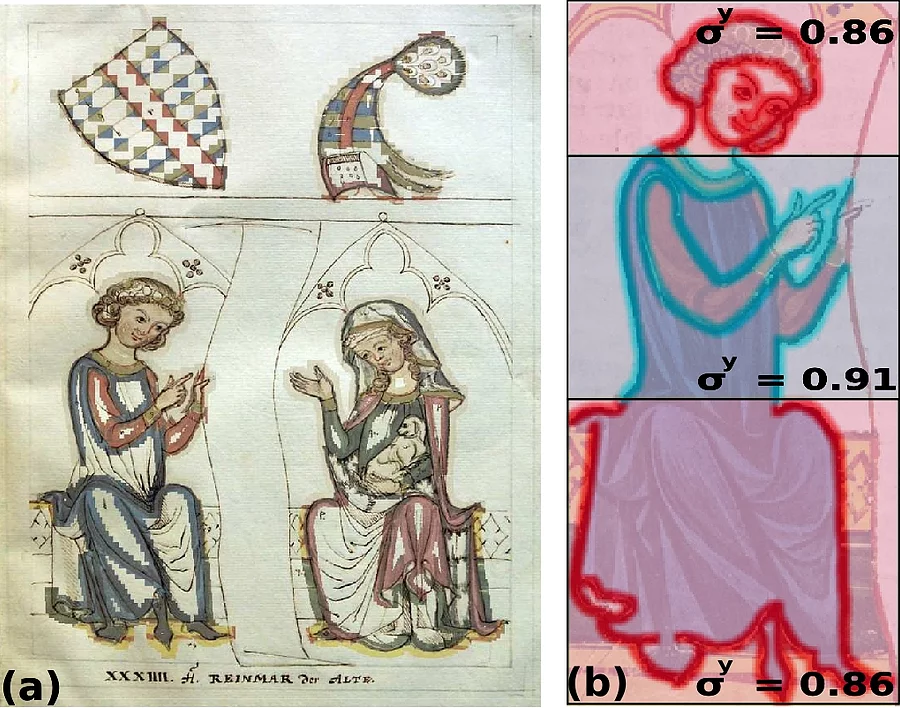Reconstructing the Drawing Process of Reproductions from Medieval Images
Publication
2011
Reconstructing the Drawing Process of Reproductions from Medieval Images Conference
Proceedings of the International Conference on Image Processing, IEEE, 2011.
In the course of the reception of the Middle Ages, many outstanding medieval manuscripts were copied by hand hundreds of years after their original production. Copying in some cases consisted in placing a thin, semi-opaque sheet of paper on the surface of the original image and sketching the contours. When comparing the copied images with the originals, slight modifications can be observed. This poses several questions for art history:
- Are these transformations natural, owing to technical peculiarities in the course of the reproduction process, or are they characteristic of specific regions or make use of particular details based on the artist’s or patron’s interpretation of the original?
- Can we reconstruct the reproduction process with the help of these modifications?
- Can we identify some underlying pattern teaching us about the cultural context in which these images were reproduced?
Idea
Based on irregularities found in a recent comparison of the 14th century originals with their 18th century manual reproductions, we present a method that allows us to reconstruct and visualize the temporal order in which reproductions were drawn.
The idea is based on the observation that parts of an image that were supposedly drawn at the same time (e.g. a contour) or in close succession (e.g. the eyes and head) display similar or identical transformations, whereas parts showing significantly different transformations were either deliberately altered after copying or geometrical errors were accumulated during the drawing process. This would suggest that they were not drawn in close succession.
Method
Firstly, we present an iterative algorithm for estimating affine transformations between registered landmark points which describe how the various image regions were transformed during the drawing process. Afterwards, we design a distance measure allowing for the distortion between transformations and the contour distances. In this way we reconstruct how closely the reproduction of a point j corresponds to its original counterpart i. We then encode the temporal succession of the drawings by adding a third dimension to the point locations.
Findings
We analyze images from the Codex Manesse, illustrated approximately between 1305 and 1340. Reproductions of these images, commissioned in 1746/47 by J.J. Bodmer and J.J. Breitinger, are compared to the originals. Our analyses reveal the following:
- The reproductions display significant alterations. Different regions of an image disclose different transformations.
- Proportions of particular parts of objects were deliberately modified.
- We reconstruct the temporal succession of the drawing process. It can be observed that areas with the most complex visual structures (e.g. facial features, drapery, hands) were drawn more or less at the same time, whereas features or lines that connect those details are subject to significant irregularities.

